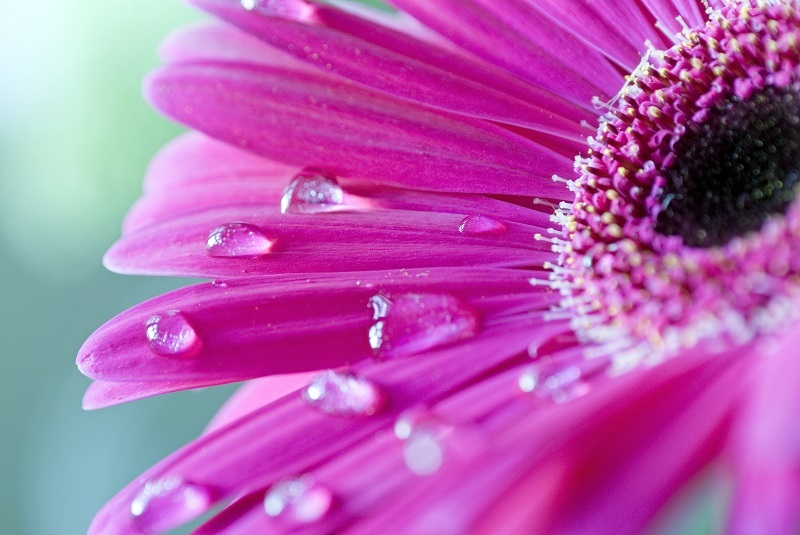The Ultimate Handbook for Perfect Orchid Care
Posted on 13/08/2025
The Ultimate Handbook for Perfect Orchid Care
Orchids are renowned for their captivating beauty, unique shapes, and vibrant colors. But despite their popularity, they often come with the reputation of being finicky or challenging houseplants. The truth is, perfect orchid care is achievable for everyone--from orchid beginners to seasoned plant enthusiasts--if you understand their unique needs. In this comprehensive guide, you'll discover everything you need to know for mastering orchid cultivation and ensuring your blooms flourish year after year.
Introduction to Orchids: Beauty and Diversity
Orchids belong to one of the largest plant families on earth: Orchidaceae. With over 25,000 species and more than 100,000 hybrids, orchids can be found almost everywhere on the globe, from tropical rainforests to alpine meadows. This diversity gives orchid lovers a vast array of shapes, sizes, and colors to enjoy, making orchid care both rewarding and fascinating.
- Phalaenopsis (Moth Orchid): Best for beginners, with long-lasting blooms.
- Dendrobium: Offers stunning variety in colors and shapes.
- Cattleya: Known for their showy and fragrant flowers.
- Oncidium: Nicknamed "dancing ladies" due to their fluttery petals.
Understanding your orchid's specific requirements is the cornerstone of achieving perfect orchid care. Let's unlock the secrets to cultivating gorgeous, healthy orchids!

Essential Elements of Perfect Orchid Care
1. Choosing the Right Orchid
Before you can provide proper orchid care, it's important to select the right type for your environment and skill level. Some orchids, like the Phalaenopsis, are more forgiving and thrive indoors. Others, such as Vanda or Cymbidium, need more precise conditions.
- For beginners, opt for Phalaenopsis or Dendrobium.
- If you crave a challenge, explore Miltoniopsis or Vanda species.
2. Understanding Orchid Potting Mediums
Unlike typical houseplants, orchids rarely grow in soil. Their roots require excellent aeration and drainage, so they thrive in specialized potting mixes:
- Bark Mix: Retains little moisture, ideal for most epiphytic orchids.
- Sphagnum Moss: Holds more water, suited for moisture-loving varieties.
- Leca (Clay Pellets): Used for semi-hydroponic orchid care.
Choosing the right potting material is crucial for optimal root health and overall orchid wellness.
3. Lighting: A Key to Perfect Orchid Growth
Light is the single most important factor in orchid care. Most orchids prefer bright, indirect sunlight, but exact requirements vary:
- Phalaenopsis: Low to medium light (east or north-facing windows).
- Cattleya and Vanda: Require strong, indirect light (south or west windows with sheer curtains).
- Oncidium and Dendrobium: Medium to high light (filtered west or south exposures).
Tip: If the leaves are dark green, your orchid might not be getting enough light. Yellowish leaves with red spots can indicate too much sun exposure.
4. Watering Your Orchid: Striking the Perfect Balance
Overwatering is the number one killer of household orchids. Orchids prefer to dry out slightly between waterings. The frequency depends on several factors:
- Type of orchid and potting medium
- Season and climate conditions
- Size of the pot
A general rule: Water your orchid once a week during active growth, and every 10-14 days in winter.
Indications Your Orchid Needs Water:
- Roots turn a silvery-gray color
- Leaves lose their plumpness
Pro Tip: Always use tepid, distilled, or rainwater. Avoid letting water accumulate in the crown or between leaves, as this can lead to rot.
5. Humidity and Air Circulation
Most orchids thrive in high humidity environments--ideally between 40% and 70%. In dry indoor climates, especially during winter, your orchid may need extra help:
- Place a tray of water and pebbles beneath your orchid pot.
- Mist leaves gently every few days, avoiding water in the crown.
- Use a room humidifier for consistent moisture.
Good air movement is equally essential. Use a fan on a gentle setting or ensure your plants have space between them to prevent disease.
6. Fertilizing Orchids for Beautiful Blooms
Because standard potting mixes lack nutrients, routine fertilization is part of perfect orchid care:
- Use a balanced orchid fertilizer (20-20-20 or orchid-specific blend).
- Apply at quarter to half-strength every other watering during the growing season.
- "Weakly, weekly" is the common mantra for fertilizing orchids.
- Flush out the potting medium with plain water once a month to prevent salt buildup.
Tip: Reduce or stop fertilizing when your orchid isn't actively growing or flowering.
Repotting Orchids: When and How
Repotting is necessary every 1-2 years to replenish the potting medium, check for root health, and encourage continued blooming. Signs your orchid needs repotting include visible root crowding, mushy roots, and medium breakdown.
Steps for Repotting Orchids
- Remove the orchid from its pot, gently untangling roots.
- Trim away any dead or rotten roots with sterilized scissors.
- Place your orchid in a fresh, appropriately sized pot, filling in with new potting mix around roots.
- Avoid fertilizing for two weeks after repotting to minimize root stress.
Common Orchid Problems and Solutions
Pest and Disease Management
Even with the best orchid care, occasional pests or ailments can arise. Here are some frequent issues and how to address them:
- Aphids, Mealybugs, and Scale: Eliminate pests with insecticidal soap, neem oil, or rubbing alcohol on a cotton swab.
- Spider Mites: Increase humidity and rinse leaves regularly.
- Root Rot: Caused by overwatering. Remove the orchid from its pot, trim all rotten roots, and repot in fresh medium.
- Leaf Spot Diseases: Cut away affected leaves and improve air circulation around your orchid.
Prevention is preferable: keep your orchids in optimal conditions and inspect regularly for early signs of trouble.
Why Isn't My Orchid Flowering?
Noticing healthy foliage but no blooms? Here's what might be amiss:
- Insufficient light: Gradually move your orchid to a brighter spot.
- Lack of temperature drops: Some orchids need cooler nighttime temps (~10?F lower) to trigger flowering.
- Too much nitrogen fertilizer: Encourage blooming with a 'bloom booster' formula low in nitrogen pre-flowering.
- Repotting shock: Give your orchid some time to adjust after repotting.
Year-Round Orchid Care Guide
Spring and Summer:
- Increase watering and fertilize regularly as your orchid grows.
- Protect from harsh midday sun.
- Check for new roots and flower spikes.
- Maintain humidity and aeration.
Autumn and Winter:
- Reduce watering as growth slows.
- Move orchids to brighter spots to compensate for shorter days.
- Some species require a cool, dry rest to trigger future blooms (e.g., Dendrobium nobile, Catasetum).
Frequently Asked Questions About Orchid Care
Do orchids need sunlight or shade?
Most orchids prefer bright, indirect light. Too much direct sunlight can scorch leaves, while too little can prevent blooming.
How often should I water my orchid?
This depends on potting mix, pot size, environment, and orchid type. The safest approach is to water when roots turn gray and the potting medium is nearly dry.
What temperature do orchids prefer?
Daytime temperatures between 65-80?F (18-27?C) and nighttime temperatures between 55-65?F (13-18?C) suit most commonly grown orchids.
Do orchids like to be misted?
Light misting can help maintain humidity, especially in dry indoor environments, but avoid misting directly into the orchid's crown.

Expert Tips for Thriving Orchids
- Use clear pots for orchids: These allow light to reach the roots and make it easier to monitor root health and moisture levels.
- Maintain a consistent care routine: Orchids thrive on stability, so try not to move them around too often.
- Never leave orchids in standing water: Empty saucers and humidity trays regularly to prevent root rot.
- Don't remove old flower spikes prematurely: In some orchids (like Phalaenopsis), old spikes may rebloom.
Conclusion: Your Reward for Mastering Orchid Care
Growing orchids isn't just about adding a touch of exotic elegance to your home--it's a journey into a world of living artistry. With careful attention to light, water, humidity, and nutrition, you can keep your orchids healthy and blooming for years to come. The ultimate handbook for perfect orchid care is all about understanding your plant's unique preferences--and enjoying the magnificent reward of vibrant, breathtaking flowers.
Are you ready to begin your orchid adventure? With these essential orchid care tips and a little patience, anyone can cultivate these extraordinary plants and enjoy their spectacular beauty in every season.
```Latest Posts
Ensuring Your Poinsettias Thrive Past the Holidays
The Ultimate Handbook for Perfect Orchid Care
The poetic narratives found in the colors and symbolism of Peony flowers






